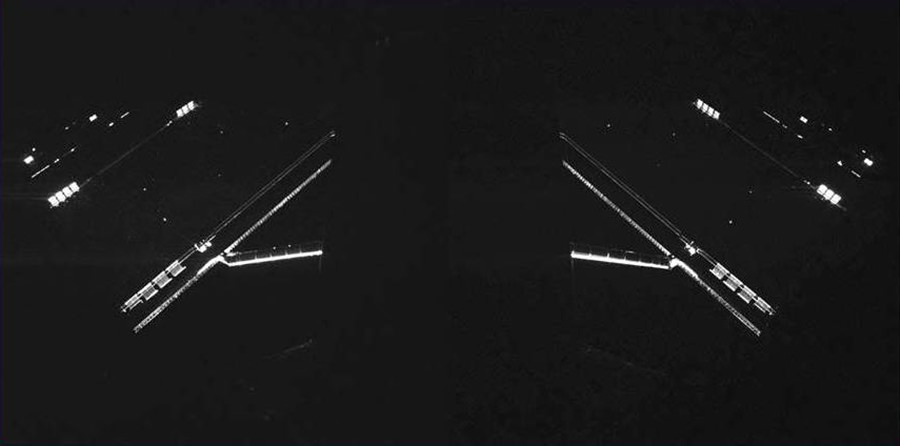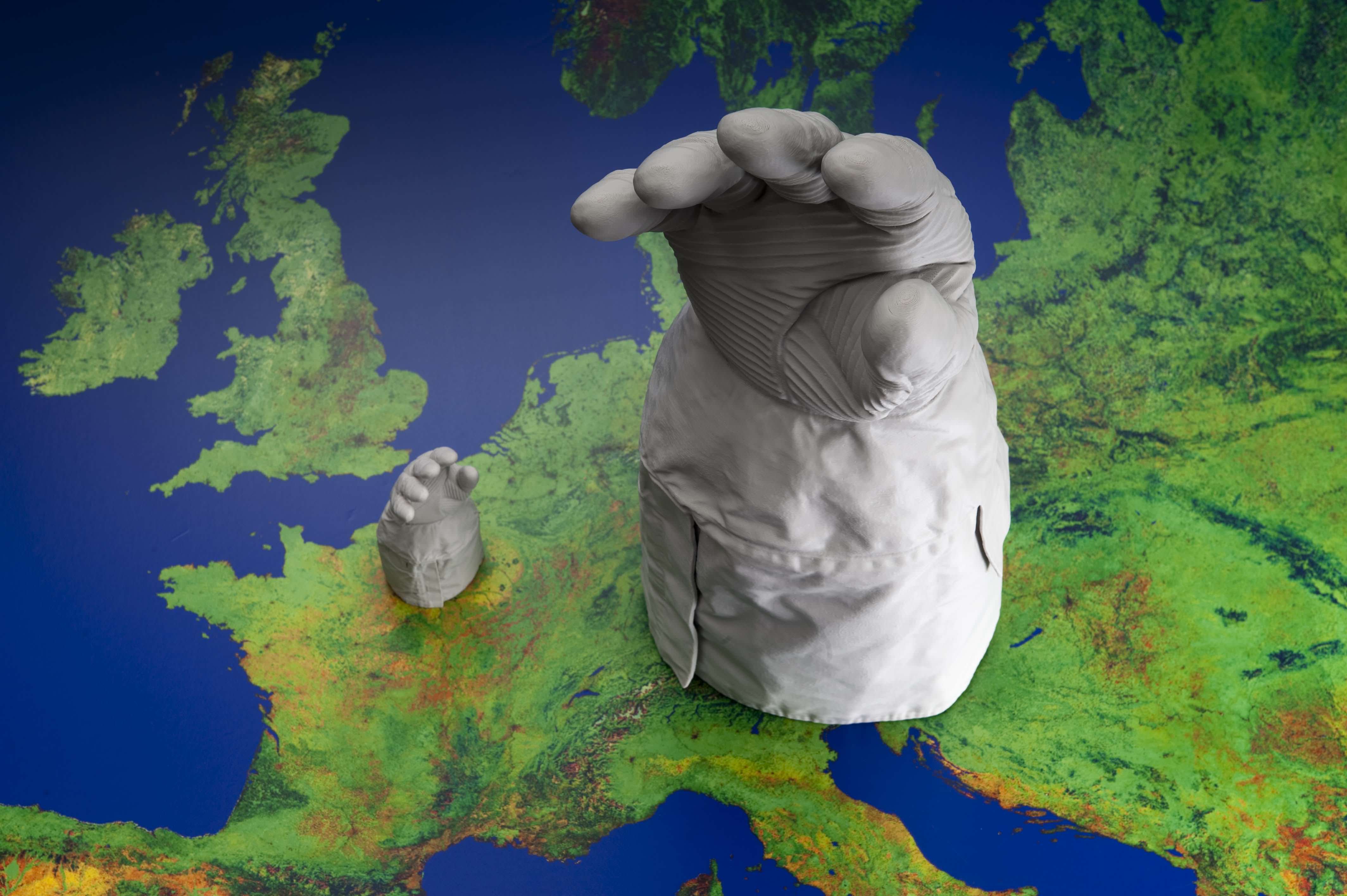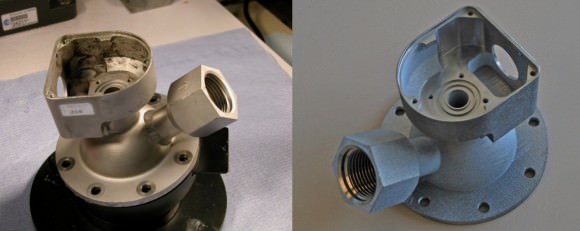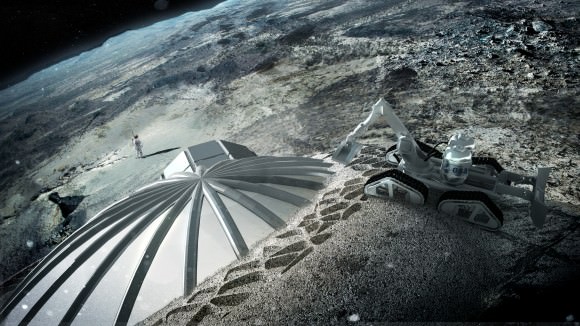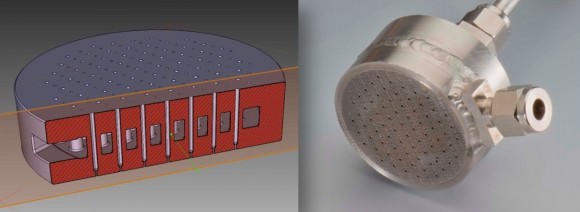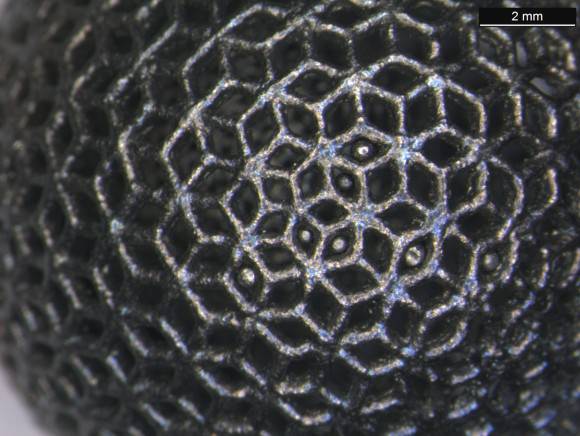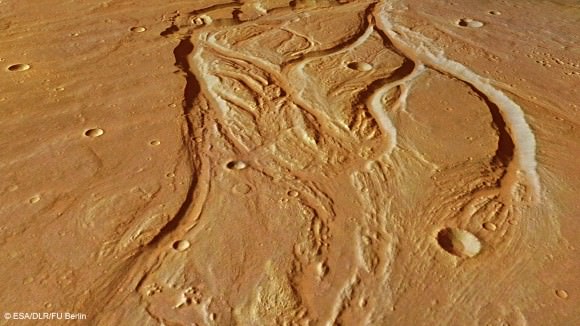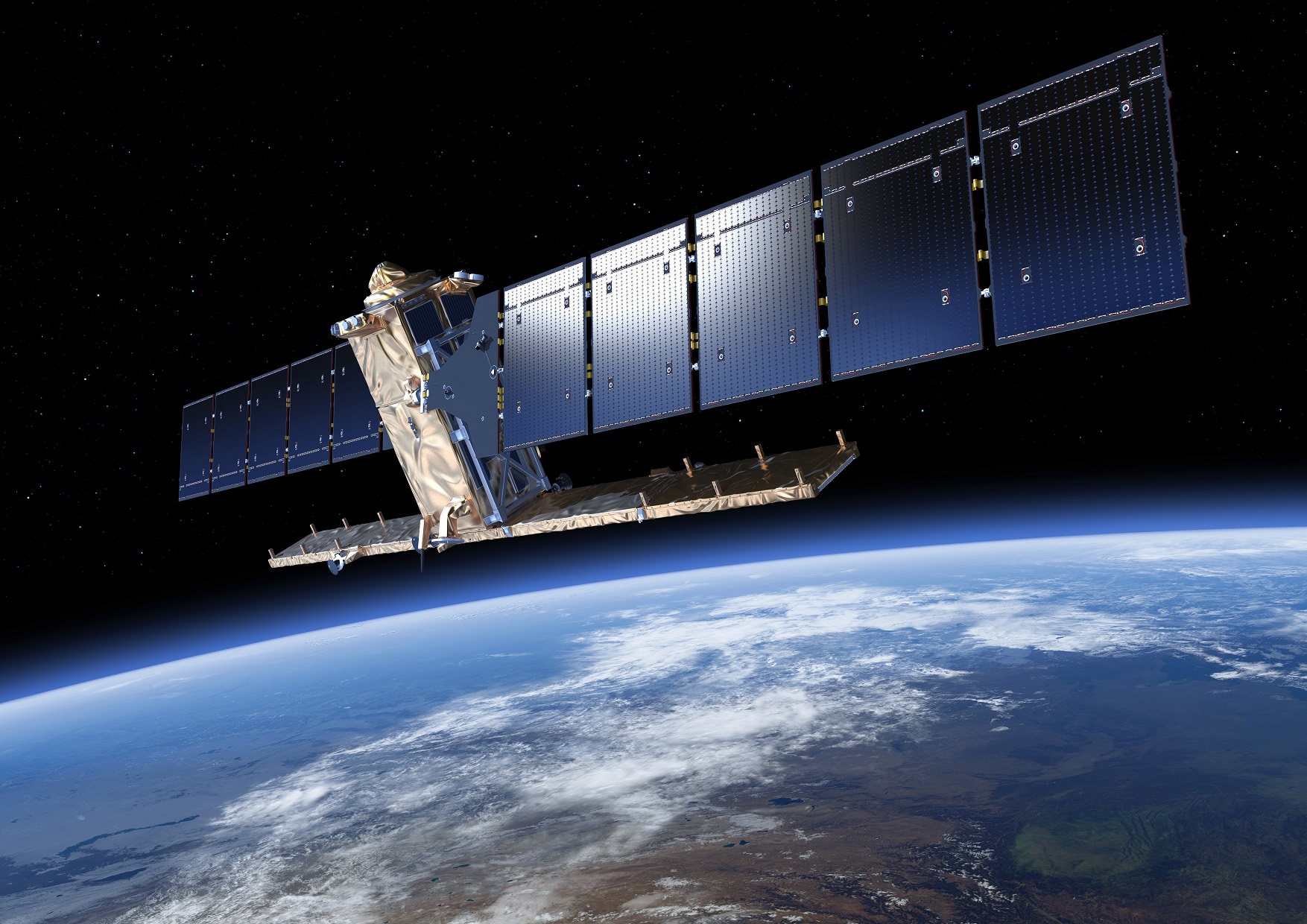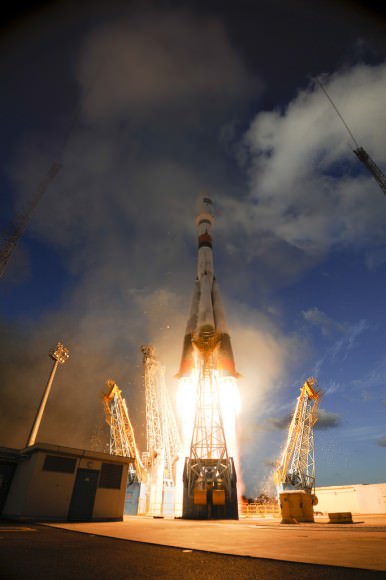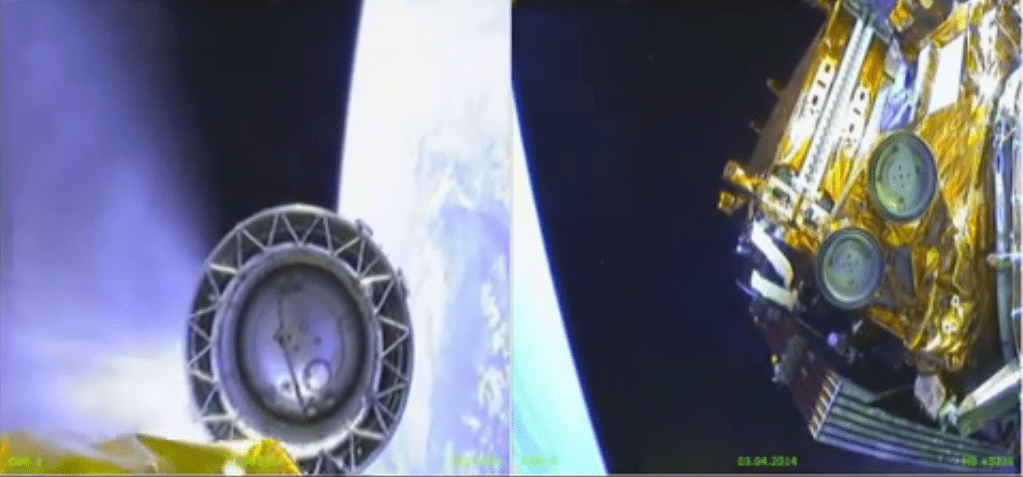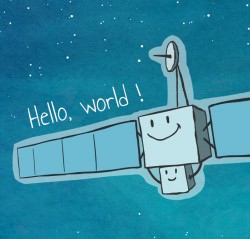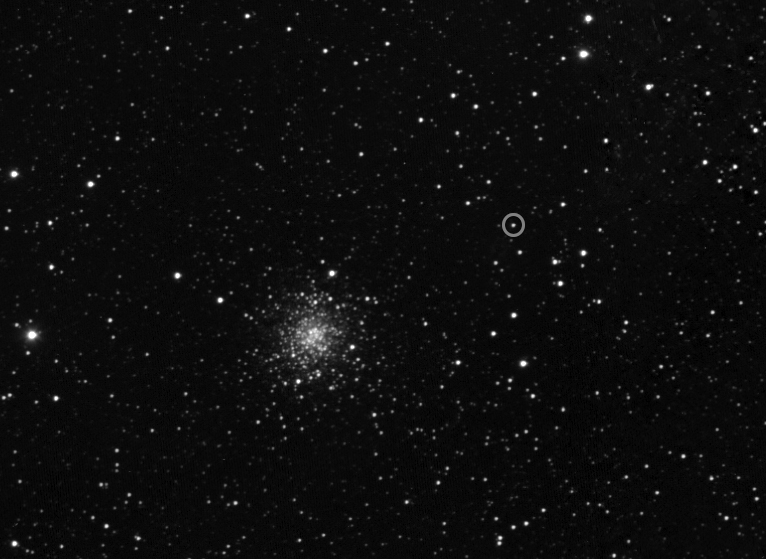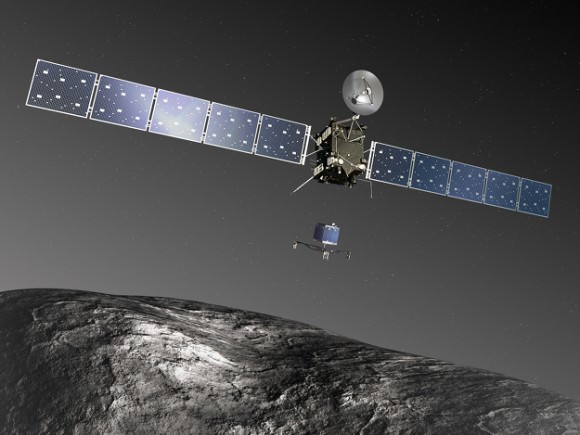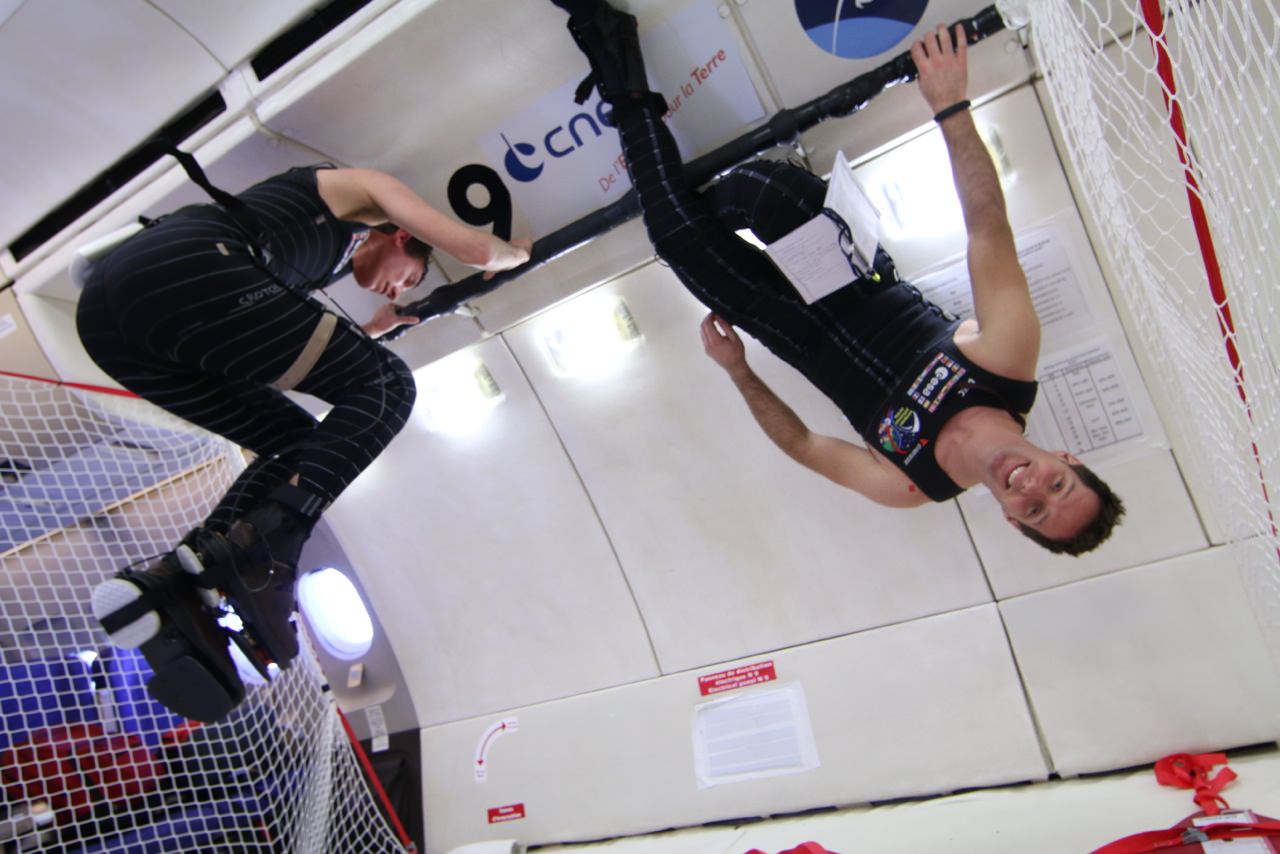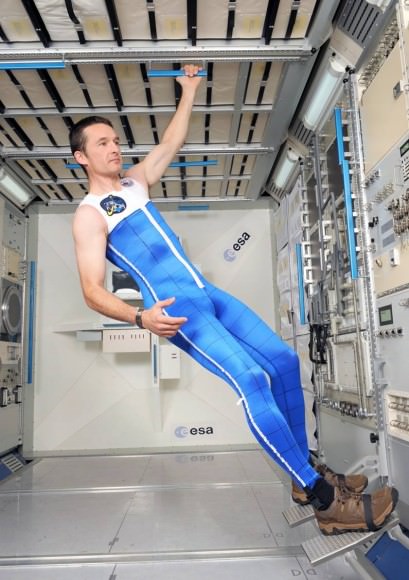UPDATE, APRIL 4: The satellite safely made it into space! Watch the launch replay and successful satellite separation here.
Just in case you aren’t already in French Guiana, here’s your chance to watch a European environment radar satellite take a rocket ride. Tune into the webcast above to see Sentinel-1A’s launch. If the schedule holds, the launch will be at 5:02 p.m. EDT (9:02 p.m. UTC) on April 3, 2014. Watch live above!
ESA heralds Sentinel-1 as a “new era in Earth observation” because the satellite duo (yes, it will be eventually two satellites) will vastly improve their ability to send out information on natural disasters and quick-moving Earth observation events. Sentinel-1 will in fact be the first of a satellite series feeding into the same information system.
Once the second half of the duo launches in 2016, Sentinel-1 will have a wide swath of geographical coverage, could go to the same areas quickly, and would send data out quickly. Repeatable and rapid Earth observations will bring data quickly into the hands of the authorities who could make decisions about evacuations and other things.
This information will be fed into Copernicus, a new system that will co-ordinate all of the Sentinel satellites for users to gain information.
“The Sentinels will provide a unique set of observations, starting with the all-weather, day and night radar images from Sentinel-1 to be used for land and ocean services,” ESA stated in an explanation about Copernicus.
“Sentinel-2 will deliver high-resolution optical images for land services and Sentinel-3 will provide data for services relevant to the ocean and land. Sentinel-4 and Sentinel-5 will provide data for atmospheric composition monitoring from geostationary and polar orbits, respectively.”
And here are a few of the other applications ESA foresees it would be useful for: sea-ice measurements, looking for oil spills, tracking ships, flagging land with “motion risks” and also doing mapping for the forestry industry.
As far as the webcast, there’s a schedule of speeches and events beforehand at the European Space Agency’s space operations center in Darmstadt, Germany. Be sure to tune in a bit earlier at 3:30 p.m. EST (7:30 p.m. UTC) to see the ceremonies.
Source: European Space Agency

